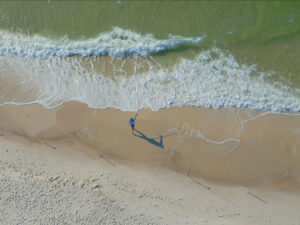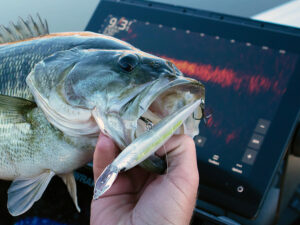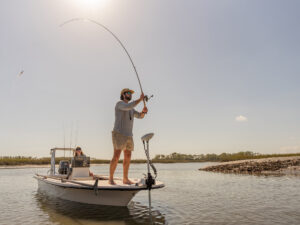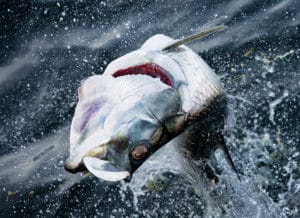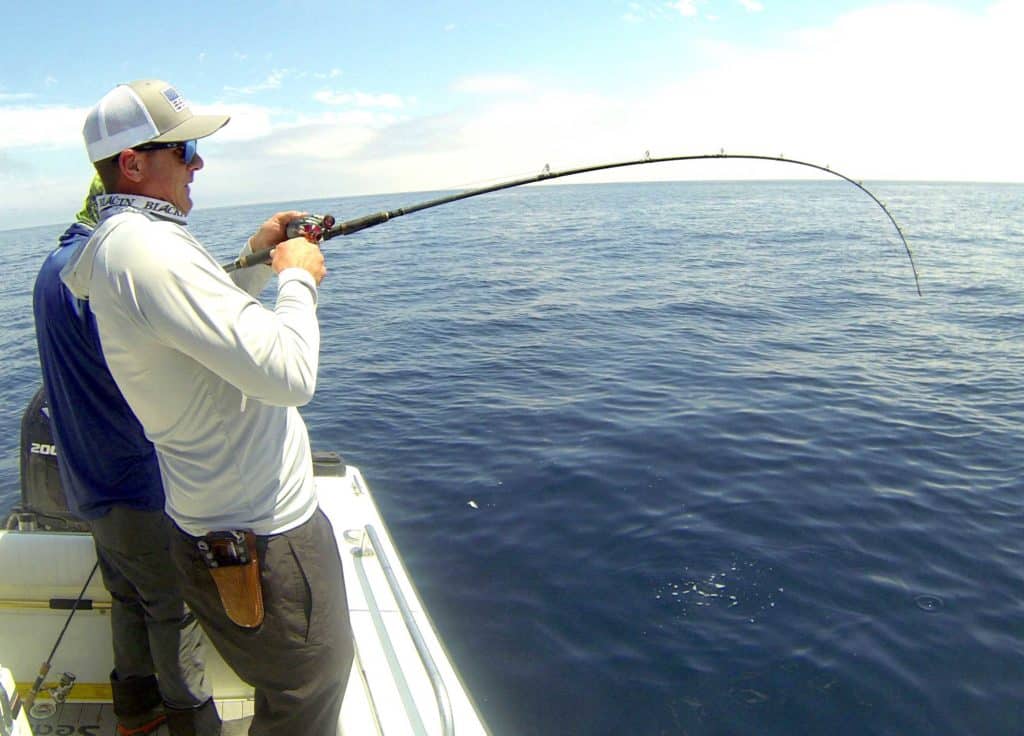
Southern California has hosted its fair share of angling revolutions. Here, after all, big-game fishing was born in the waters off Santa Catalina Island in the early 1900s, spurred by angling pioneers such as George Chase Farnsworth and S. Kip Farrington, who introduced techniques like kite fishing for Pacific bluefin tuna.
In the 1970s and ’80s on the long-range boats based in San Diego, stand-up big game fishing developed as anglers turned to specialized rods, reels and techniques for landing huge yellowfin tuna from a stationary boat and without a fighting chair.
And now, another SoCal revolution looms large, centered around the development and growing popularity of larger and more powerful low-profile reels by brands such as Daiwa, Okuma, Penn and Shimano. While inshore Gulf anglers have long preferred smaller low-profile casting reels to spinners, the California trend focuses on larger, beefier versions targeting a wide range of gamefish, from calico bass and bottomfish to California yellowtail and bluefin tuna.
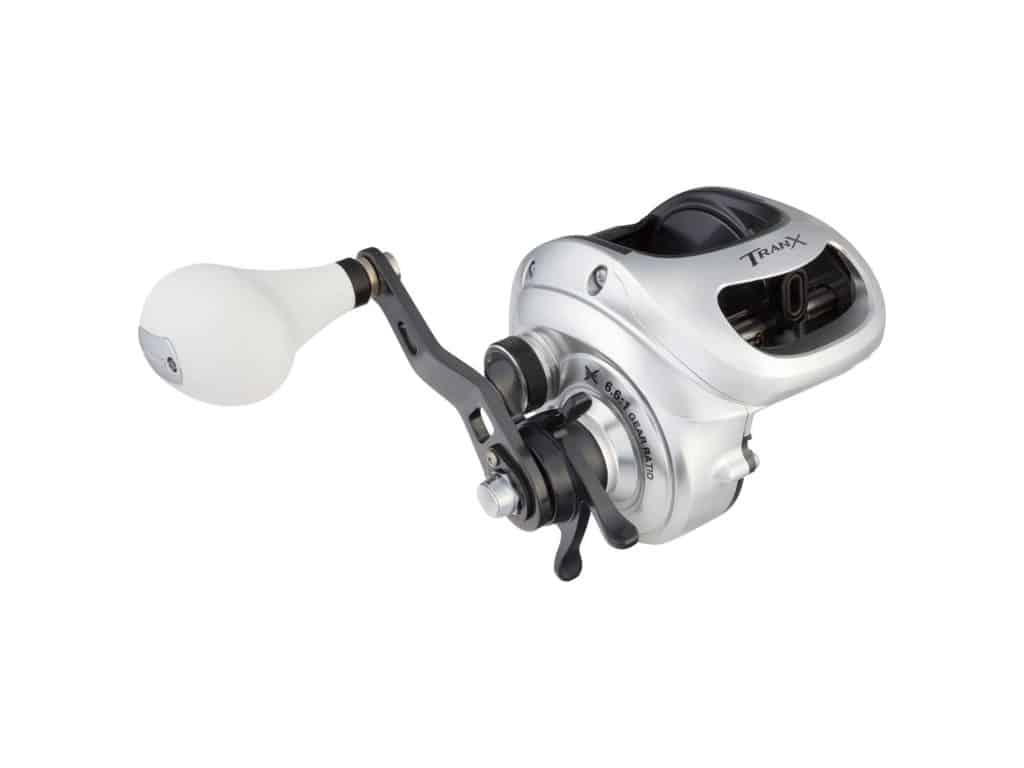
Major Players
“It has definitely been a trend,” says Capt. Ben Florentino of Coastal Charters. Florentino specializes in targeting calico bass and California yellowtail along the SoCal coast and at offshore islands such as Catalina and San Clemente. Florentino is also a pro-staffer for Shimano, one of the first brands to introduce larger low-profile reels in the form of the Shimano Tranx 500, 400 and 300.
As SoCal saltwater anglers began buying, using and talking up these reels in growing numbers, other reel brands took notice and ramped up development and marketing of similar saltwater models, most notably Daiwa with the Lexa HD line and Okuma with the Komodo SS series. Just this year, Penn debuted two new lines of low-profile reels—the Fathom and Squall low-profile series for saltwater fishing—designed to compete in this market.
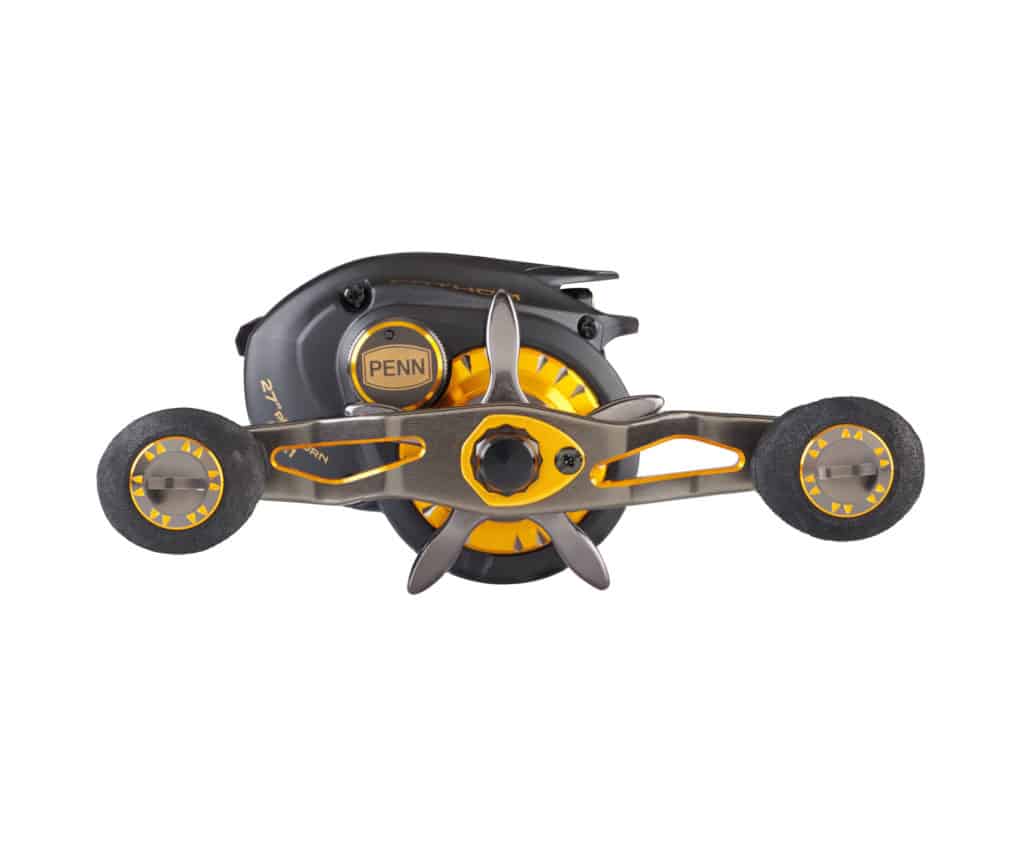
Ease of Use
What’s made these reels so popular for SoCal fishing? Ease of use is key, combined with the ability to land large, powerful fish, says Capt. Jimmy Decker of Fishing with Decker charters. Decker guides guests on wide ranging angling adventures from offshore fishing to targeting bass and halibut in bays and harbors. For most of Decker’s fishing, he is now using the Penn Fathom series. He serves as a pro-staffer for Pure Fishing, Penn’s parent company.
A combination of factors renders low-profile reels well suited for SoCal fishing, Decker explains. “One of the biggest is comfort. I use lures almost exclusively and cast 800 to 1,200 times during a trip, and with the thumb-bar freespool and [the ability to] turn the handle to click in gear, it is so much easier and comfortable than with a conventional reel,” he says. “Plus, with the level-wind feature, I don’t have to worry about putting line on the spool evenly. That happens automatically, so I can focus more on fishing.”
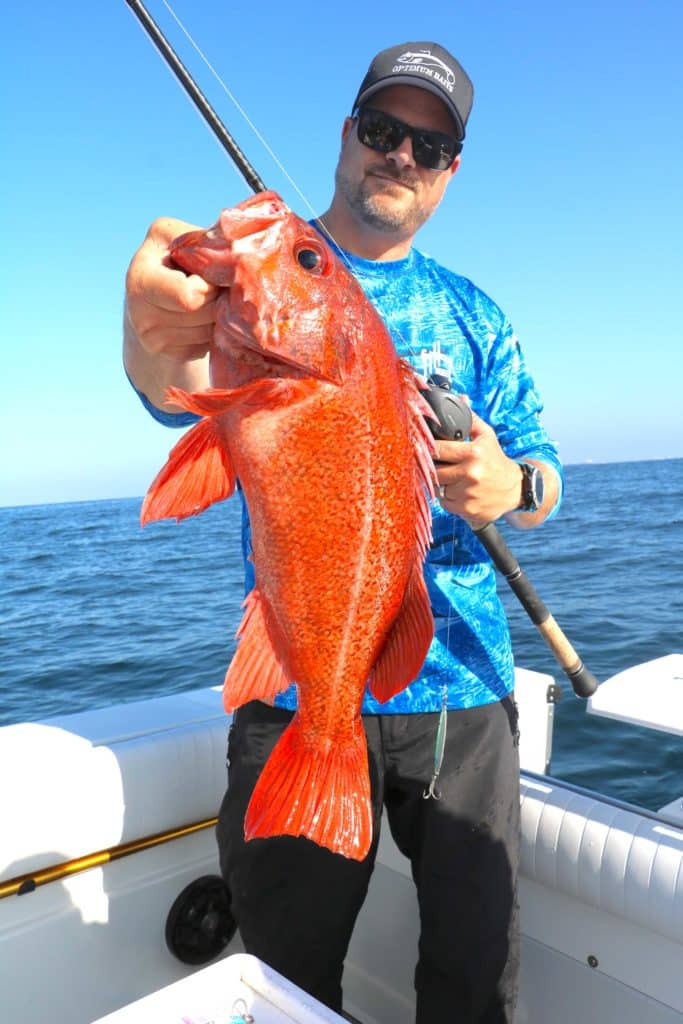
Fewer Backlashes
Long, backlash-free casts can also be critical in many techniques employed along the West Coast, including casting “surface iron” (lightweight metal jigs) for California yellowtail and Pacific barracuda, throwing swimbaits for calico bass, and tossing poppers and sub-surface walkers to breaking schools of tuna.
“With today’s saltwater low-profile reels, it’s easier to rip off long casts without backlashing than it is with a conventional reel,” says Florentino. “Once the casting brake is properly adjusted, it’s very difficult to backlash one of these reels, even for a novice.” In addition to the casting brake, line tends to come off the spool more evenly and smoothly than with a non-level-wind reel, and that contributes to easier casting with few if any backlashes, he points out.
Low-profile reels also allow anglers to cast very light metal jigs such as a 21-gram Coltsniper to schools of tuna that are feeding on small baits such as anchovies. “It’s tough to cast such a small lure with a conventional reel, but you can really get off a long cast with a Penn Fathom low-profile and not worry about backlashing,” Decker says.
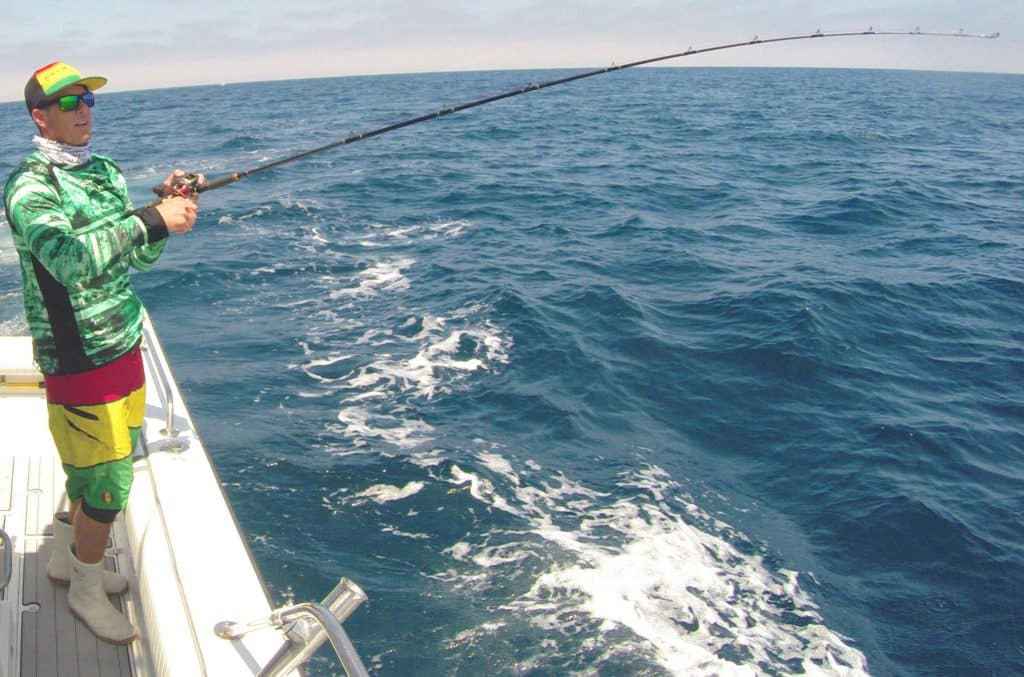
Low-Pro Sizes
Low-profile reels for saltwater fishing typically come in two or three sizes, ranging from 200 for the smallest to 400 for the largest, though the Shimano Tranx is available in one size larger, the 500.
A key to the low-pro’s effectiveness lies in the nature of today’s braid fishing lines versus monofilament. The smaller diameter of braid translates to greater line capacity on the relatively compact reels, and this enables anglers to tackle fish they might not have previously considered on such a small reel.
For instance, a Tranx 300 holds about 190 yards of 50-pound-test braid, while a 400 holds around 170 yards of 65-pound-test braid. The Tranx 500 holds 270 yards of 65-pound braid.
Decker’s go-to reel is the Penn Fathom 300 low-profile, which he loads with 50-pound braid tied to 40-pound-test fluorocarbon leader. This reel ideally targets calico bass, yellowtail up to about 15 pounds and school tuna to about 30 pounds. When chasing schools of bluefin tuna or larger yellowtail, Decker switches to the 400-size Penn Fathom low-profile, which he loads with 65-pound braid and 65- to 80-pound-test fluorocarbon leader.
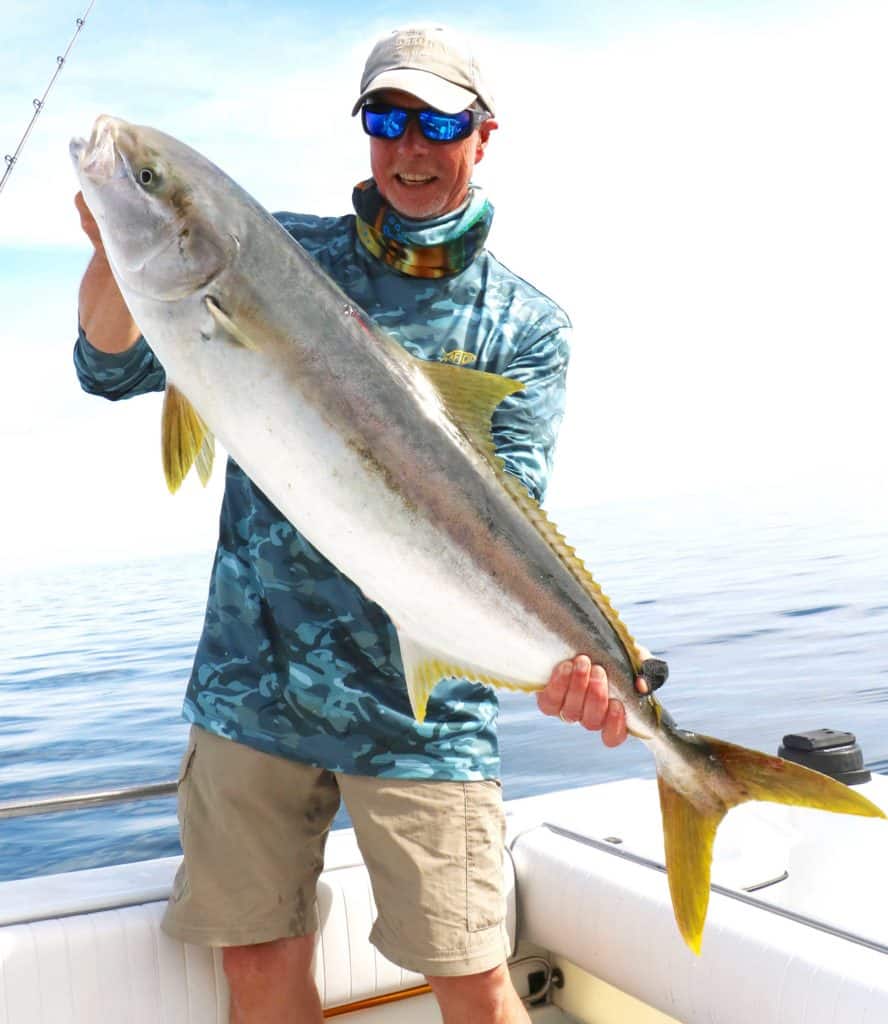
Powerful Designs
Comfort and ease aside, once you hook a hard-charging tuna or yellowtail, you want a reel with strength and power. “The star drags are strong and smooth,” says Florentino of the Tranx series. He’s caught yellowtail in the 30s on these reels, a feat that requires immense stopping power to turn the fish away from jagged structure and kelp.
The Shimano Tranx 500 offers up to 25 pounds of drag pressure, as does the Daiwa Lexa HD 400 and Penn Fathom 400.
In the Penn Fathom low-profile series, strength extends into the metal frame, side plate and spool, as well as the main brass gear and bronze pinion. The Okuma Komodo also features a metal frame, side plate and spool, plus stainless-steel main and pinion gears. Ball bearings provide exceptional smoothness for casting, retrieving and fighting fish.
Spin-Phobia?
So why do SoCal anglers gravitate toward conventional reels — be they low-profile or round? After all, reel makers also build serious offshore spinning reels capable of handling giant fish.
Truth be known, a long-standing bias exists that owes its origins to partyboat lore. In the past (and sometimes even today), many partyboat captains disallowed spinning reels—coffee-grinders, they called them—on the tightly packed sport-fishing vessels.
Read Next: Wide Open Calico Bass Fishing
The reason? The drag systems of yesteryear could not control an albacore or California yellowtail that would, as a result, weave a nightmarish tangle of lines with other anglers. That prejudice lives on, but as drags have improved, some West Coast private-boat anglers have increasingly turned to saltwater spinning tackle, particularly when it comes to achieving extra casting distance with tiny baits such anchovies or micro-sardines.
If history indeed helps guide trends — and it frequently does — then the growing popularity of saltwater low-profile reels in California will eventually spread to other coasts. No doubt these reels suit other species, be it striped bass in the Northeast, redfish in the South, cobia in the Gulf or snook in Florida.

